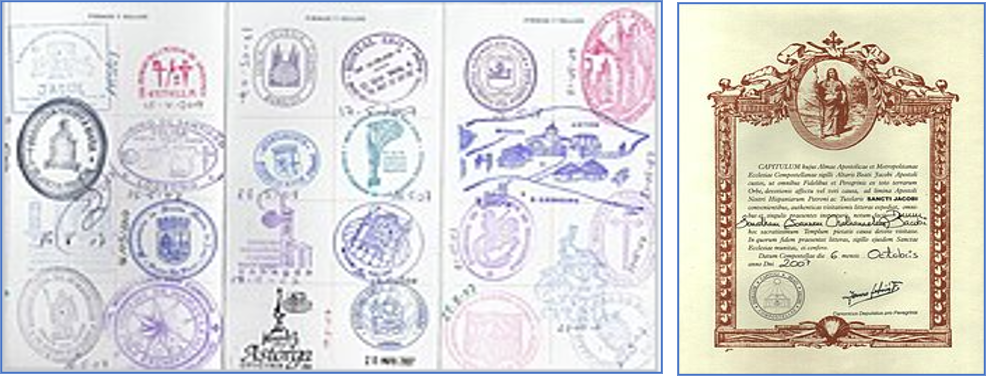Camino de Santiago de Compostela - The Way of St. James
The Camino de Santiago ("Pilgrimage of Compostela"), known in English as the Way of St James, is not a single road or trail, but a network of pilgrims' ways or pilgrimages leading to the shrine of the apostle Saint James the Great in the cathedral of Santiago de Compostela in Galicia in northwestern Spain, where tradition holds that the remains of the apostle are buried.
Created and established after the discovery of the relics of James of Zebedee at the beginning of the 9th century, the Way of St James became a major pilgrimage route of medieval Christianity from the 10th century onwards. But it was only after the capture of Granada in 1492, under the reign of Ferdinand II of Aragon and Isabella I of Castile, that Pope Alexander VI officially declared the Camino de Santiago to be one of the "three great pilgrimages of Christendom", along with Jerusalem and Rome.
The Northern Route from Southwest France to Santiago de Compostela
The Camino Francés, or French Way, is the most popular. The Via Regia is the last portion of the (Camino Francés). Historically, most pilgrims came from France: typically, from Arles, Le Puy, Paris, and Vézelay; some from Saint Gilles. Cluny, site of the celebrated medieval abbey, was another important rallying point for pilgrims and, in 2002, it was integrated into the official European pilgrimage route linking Vézelay and Le Puy.
Most Spanish consider the French border in the Pyrenees the natural starting point. By far the most common, modern starting point on the Camino Francés is Saint-Jean-Pied-de-Port, on the French side of the Pyrenees, with Roncesvalles on the Spanish side also being popular.
The object of the walk, regardless of where you start in the network of trails, is the reliquary of Saint James in the Cathedral of Santiago in the city of Santiago de Compostela, Galicia in the northwest part of Spain.
Reliquary of Saint James
The distance from Roncesvalles to Santiago de Compostela through León is about 800 kilometers or 500 miles. The Camino is well marked with the symbol of the Way, a scallop sea shell.
Pilgrims will find some form or another of the shell all along the Camino, whether it be on posts or imprints on walls in towns and cities throughout.
It must be noted that the Camino is not just for Christian pilgrims, it has been adopted and traversed by people of all faiths, or of no faith at all.
No matter the reason, from where you start, or the motivation behind your quest to walk the Camino, the final destination, the Cathedra of Santiago is a breathtaking monument to Christendom.
Cathedral of Santiago
Interior images of the Cathedral
Pilgrims, at the onset of their trek can register to receive a passport into which they can collect rubber stamps from the different churches, paradors, way stations, restaurants, towns and cities along their chosen route. At the end of the journey, pilgrims will receive a certificate of completion. This serves as a personal momentum of one’s accomplishments.
The Passport to Record Your Walk and the Certificate of Completion





